How to Write a Newspaper Article for Kids
1 | Newspaper front page template
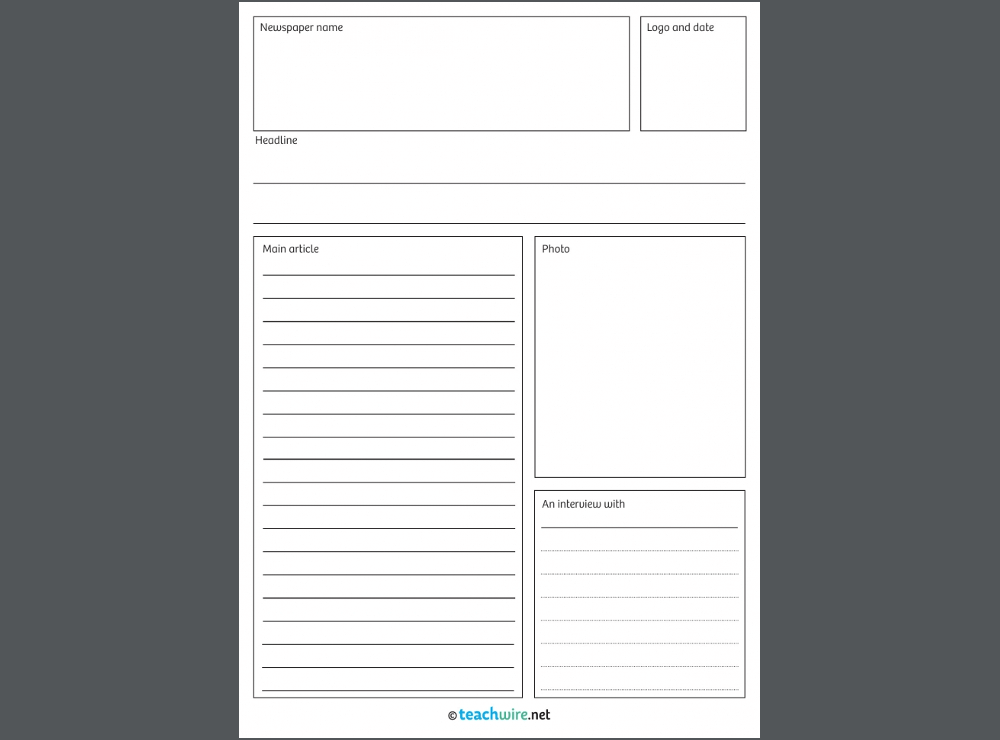
Of course, a great place to start is to have a free, printable template to work from, so we've created one for you to download and print.
Get it here.
2 | Tricky grammar worksheets – layout devices
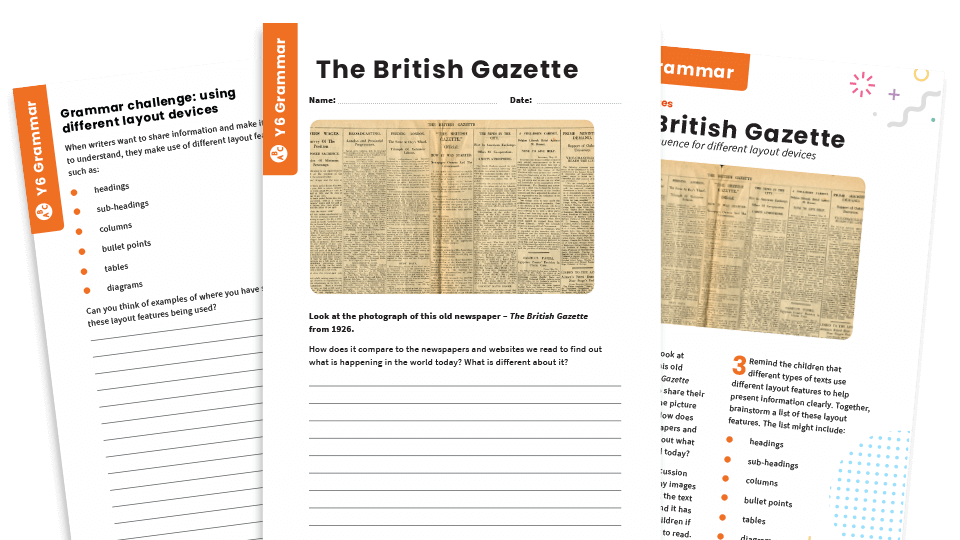
This KS2 grammar teaching sequence for layout devices has been designed to help children revisit and remember a key grammatical concept from the National Curriculum programme of study.
The session provides a motivating and memorable image to stimulate discussion, before introducing the grammar element.
Children have time to practise using this feature, before undertaking a short writing task to apply what they have learnt in the context of creative writing.
The resource includes teacher notes and a pupil worksheet.
Get this resource here.
3 | 'Hack' and edit websites
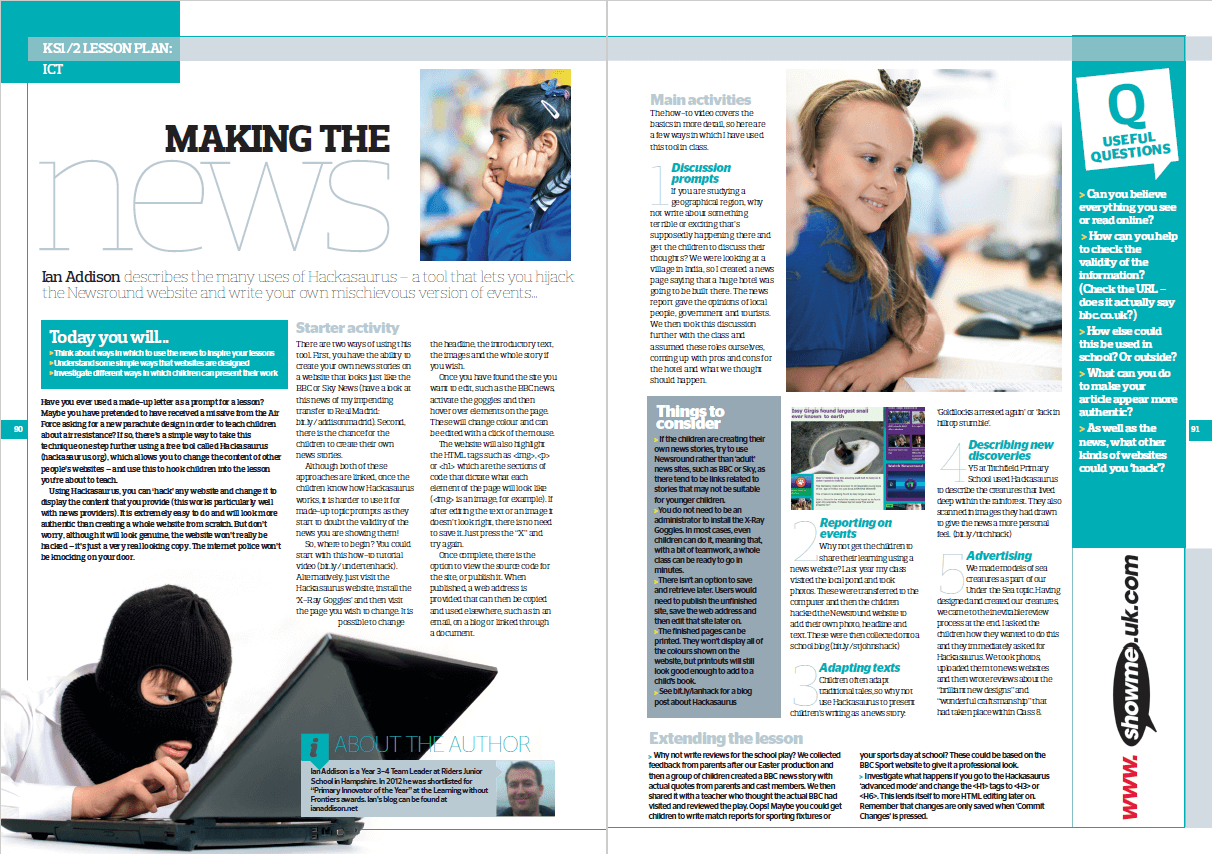
You know what also makes a good template? Remixing real websites.
This lesson plan uses a free tool called Hackasaurus, which allows you to change the content of other people's websites – and use this to hook children into the lesson you're about to teach.
Using Hackasaurus, you can 'hack' any website and change it to display the content that you provide (this works particularly well with news providers). It is extremely easy to do and will look more authentic than creating a whole website from scratch.
But don't worry, although it will look genuine, the website won't really be hacked – it's just a very real looking copy. The internet police won't be knocking on your door.
Download the whole lesson plan here.
4 | Features of a newspaper report
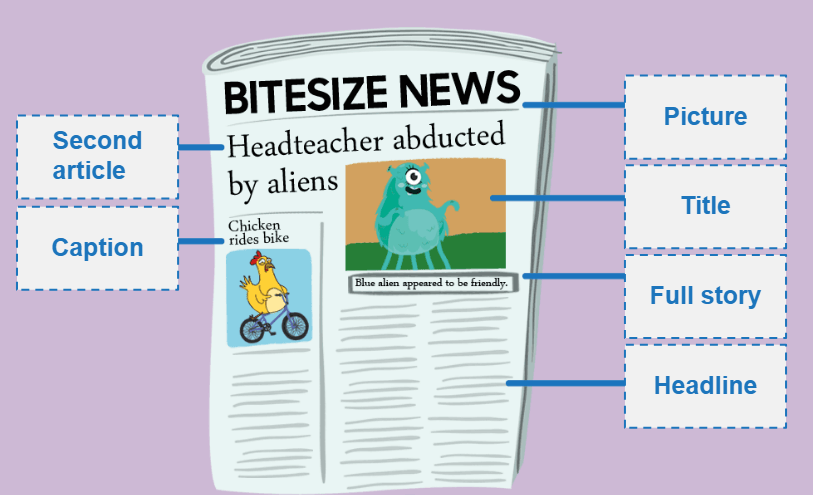
This BBC Bitesize guide goes over all the basics about newspaper articles in a short, snappy video, plus there's a quick interactive activity where children label a front page with the correct terms such as 'headline', 'caption' and 'title'.
Find all this here.
5 | News report writing tips
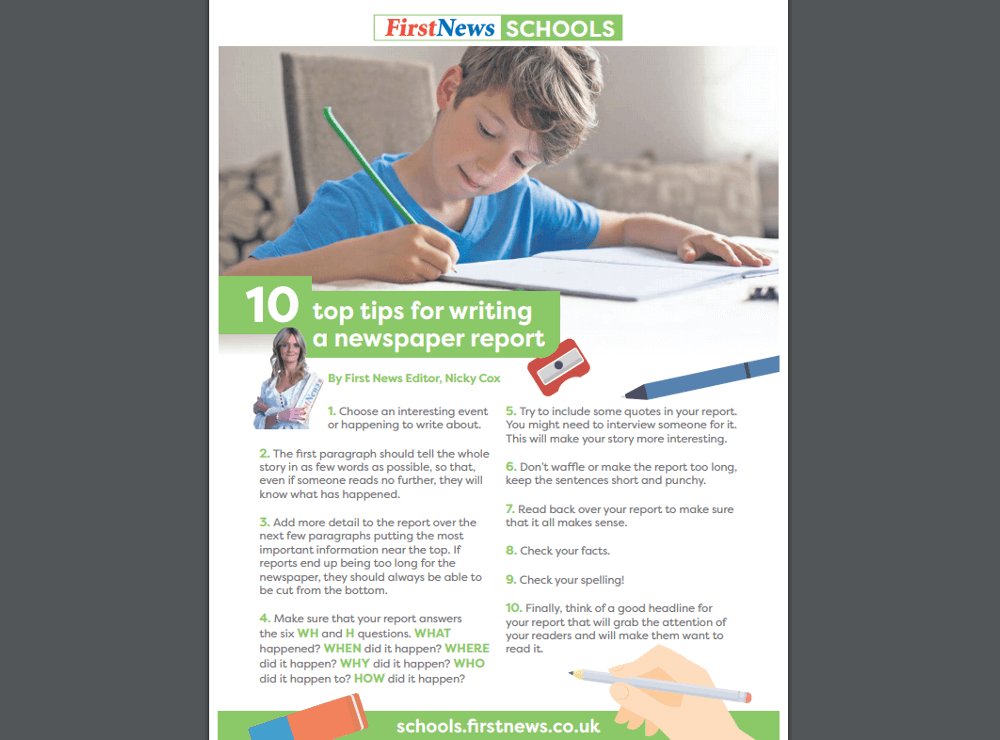
This free literacy poster from First News features the top 10 tips for writing a newspaper report to help pupils perfect their articles.
Check it out here.
6 | Fact or opinion worksheet
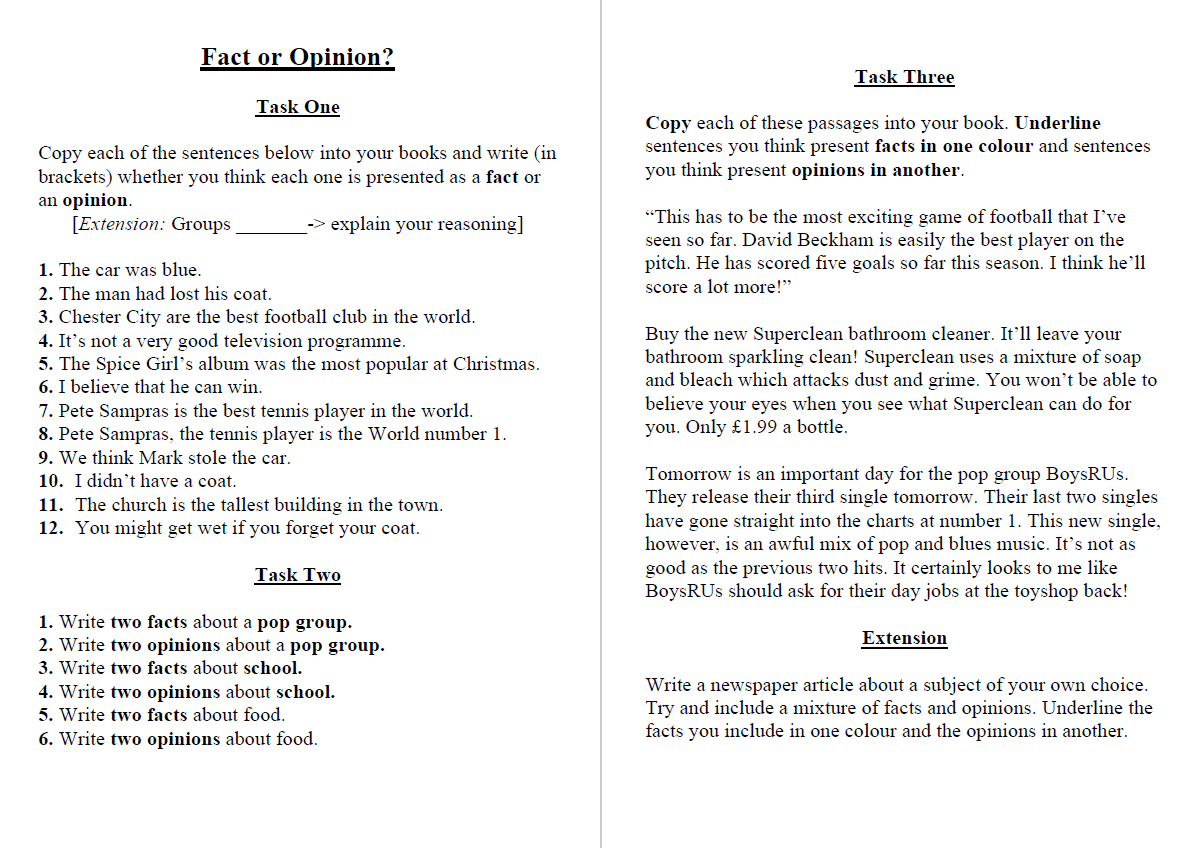
This simple worksheet is divided into three sections.
The first presents a number of statements for pupils to decide whether they're fact or opinion, the second asks them to write their own facts and opinions on various things, and the third features three passages where they need to pick out the facts and opinions.
Plus, there's an extension activity that asks them to write their own newspaper article and then underline the facts and opinions in different colours.
Download and print here.
7 | Analyse the presentation of newspaper articles
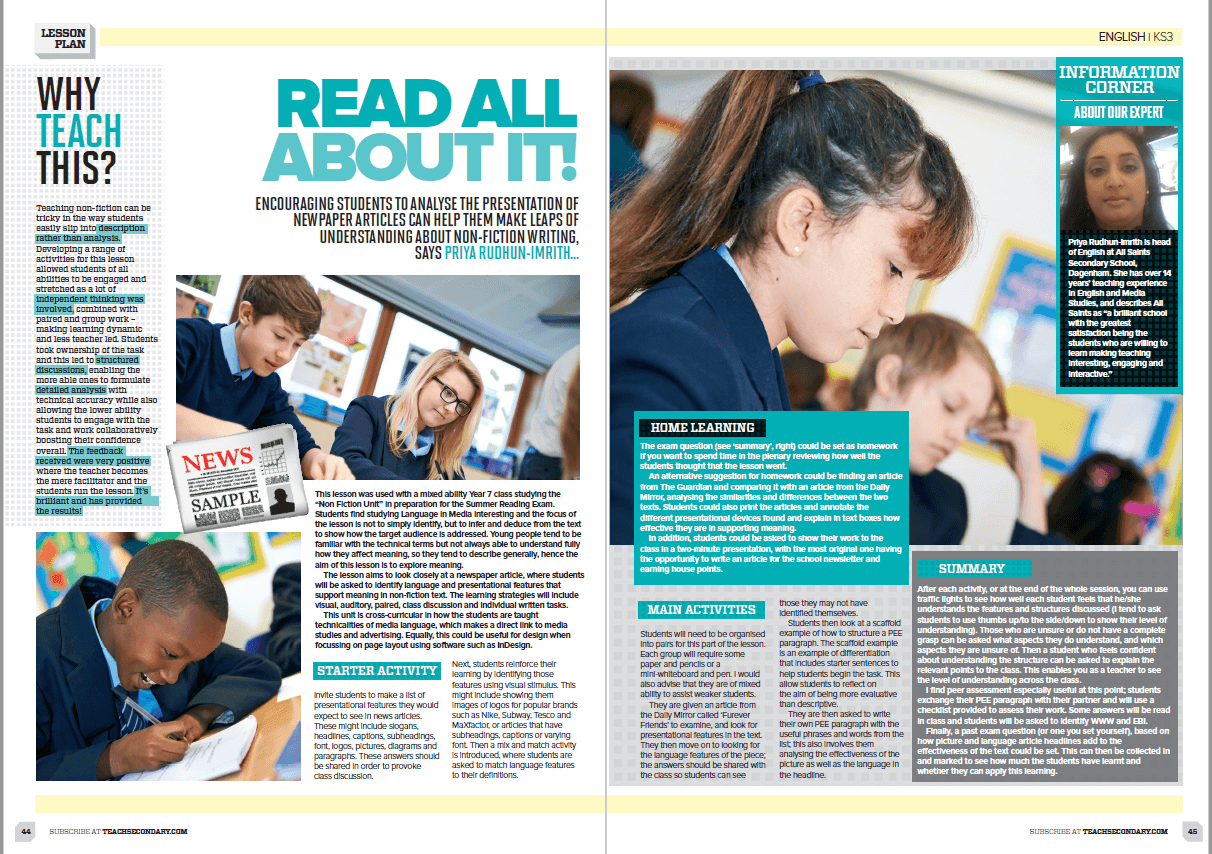
This lesson plan was designed for a mixed-ability Year 7 class, so should be easily adaptable for upper-KS2.
Students find studying language in media interesting, but and the focus of the lesson is not to simply identify, but also to infer and deduce from the text to show how the target audience is addressed.
Young people tend to be familiar with the technical terms but not always able to understand fully how they affect meaning, so they tend to describe generally, hence the aim of this lesson is to explore meaning.
The lesson aims to look closely at a newspaper article, where students will be asked to identify language and presentational features that support meaning in non-fiction text.
Download it here.
8 | Opening lines
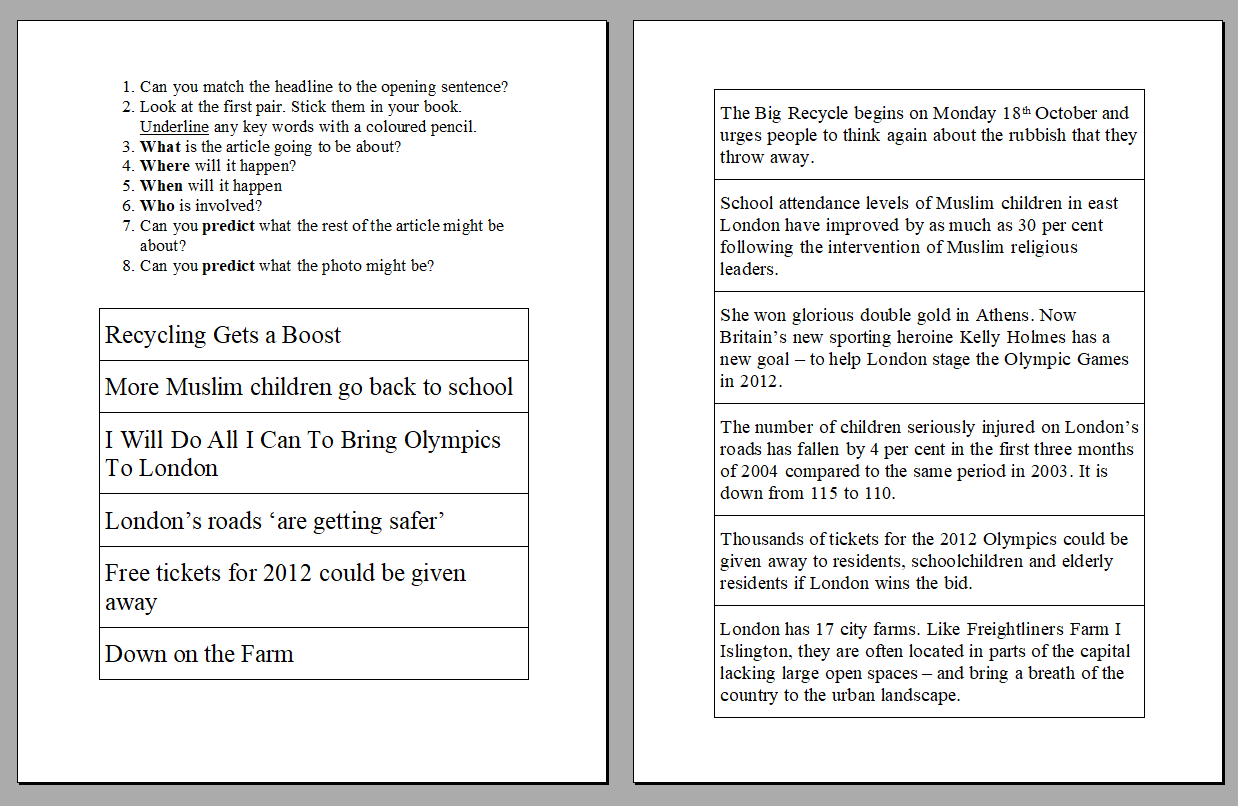
This word document features a number of headlines and opening sentences to newspaper articles and tasks students to match them together.
It then gives them a number of important questions to answer and tasks to do, from picking out key words to considering what they think each article will be about or what the main photo might be.
Click here to download.
9 | Use drama to explore the stories behind newspaper headlines
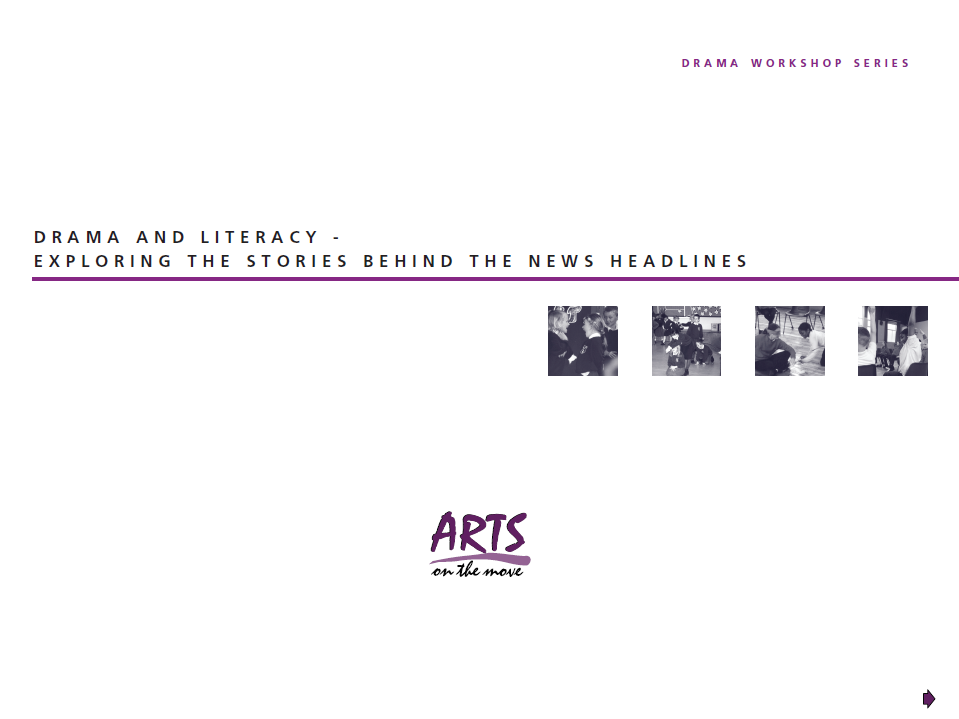
This unit of work lets KS2 pupils use drama to explore the stories behind newspaper headlines. It focuses on creating story, looking at pivotal moments, exploring character and feelings, reporting, representing and recording news items.
The scheme is presented as one long unit but can easily be divided into shorter lessons.
Drama methods include freezes, improvisation, interviews, hotseating and presentations, and the scheme is also great for prompting further creative writing activities.
Download it here.
10 | Newspaper reports example articles
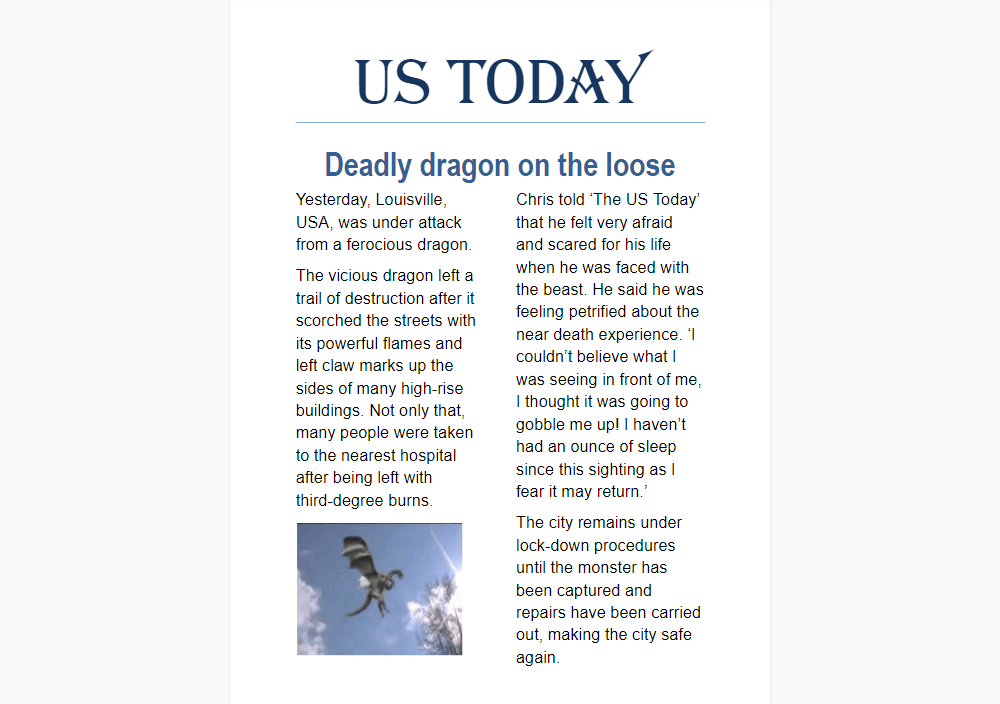
For a wealth of free downloadable reports and recounts, head over to Literacy Wagoll where you'll find reports of dragons on the loose and Jack climbing the beanstalk to things like WW2 and the Rugby World Cup final.
Find all these and more here.
11 | More activities
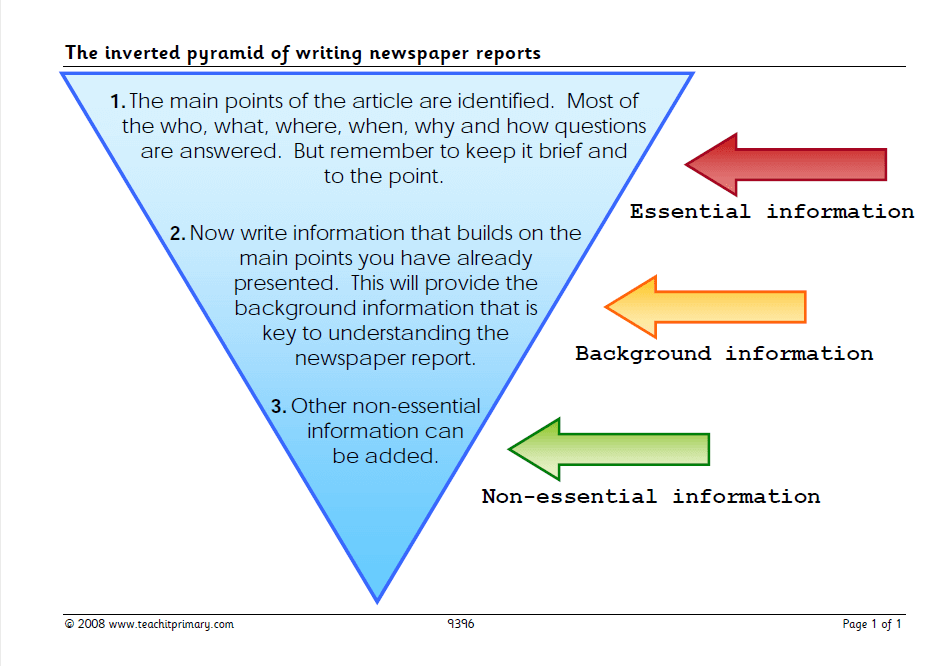
Over at Teachit Primary there's a great selection of newspaper-related activities for KS2.
There's this one that explains the concept of the inverted news pyramid, where all essential information is stacked at the front of the article.
There's this one on avoiding ambiguity, and one on refraining from repetition, plus this one on the art of alliteration in headlines.
Find the whole selection here.
How to Write a Newspaper Article for Kids
Source: https://www.teachwire.net/news/how-to-write-a-newspaper-report-ks2-english-resources
0 Response to "How to Write a Newspaper Article for Kids"
Post a Comment